Key takeaways:
- Collaboration in songwriting enhances creativity, often leading to breakthroughs through diverse perspectives and open communication.
- Balancing ideas is crucial; recognizing when to let go of personal attachments can lead to more impactful results.
- Creating a safe environment for sharing and celebrating contributions fosters trust and camaraderie among team members.
- Incorporating playful exercises and visual aids can ignite creativity, making the songwriting process more dynamic and inspiring.

Understanding teamwork in songwriting awards
Collaboration is at the heart of songwriting, especially when it comes to awards. I remember a time when I worked with a team of diverse musicians. Each member brought unique perspectives that challenged my ideas, and it often led to breakthroughs I never thought possible. How often do we overlook the value of differing opinions in our creative process?
In a competitive environment, such as songwriting awards, teamwork can make or break a project. It’s not just about making music; it’s about crafting a narrative together that resonates with listeners. I once found myself struggling with a melody, but one of my co-writers suggested flipping the rhythm completely. It transformed the piece into something special, and I realized that vulnerability in sharing one’s artistic struggles can lead to unexpected collaboration magic.
Effective communication is crucial in these collaborative settings. I once participated in a workshop where each participant had to share their favorite lyrical lines. The feedback was revealing; it opened my eyes to the emotional connections others had with our work. This experience underscored the importance of fostering an environment where everyone feels safe to express their ideas—after all, aren’t the best songs born from open, genuine dialogue?
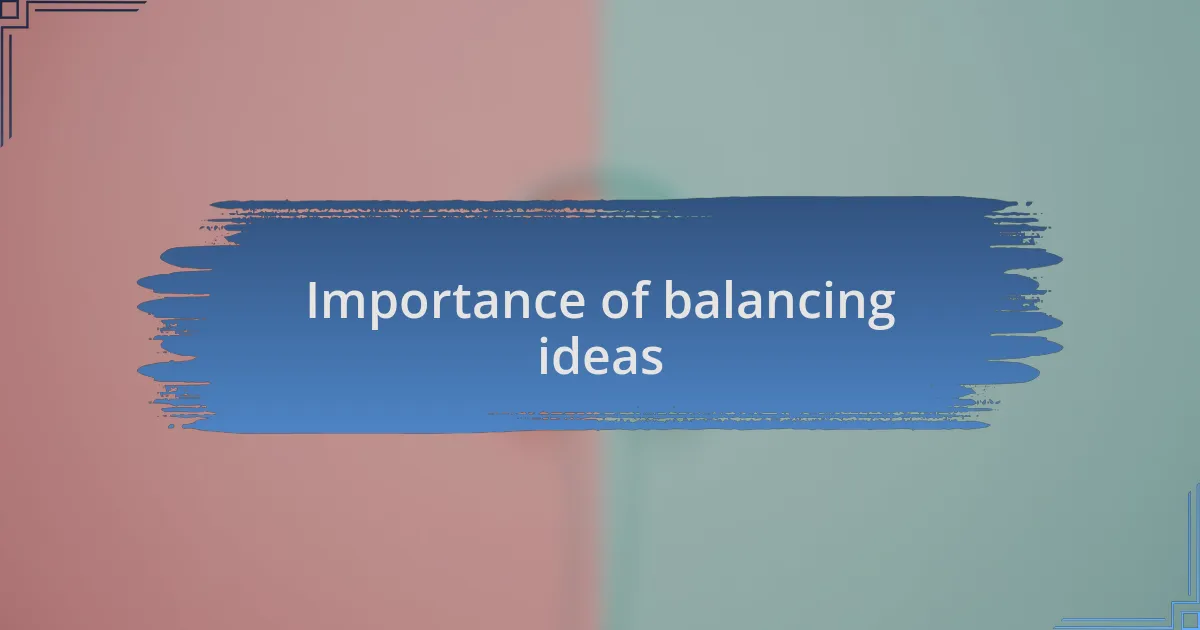
Importance of balancing ideas
Balancing ideas is essential in a collaborative environment, especially in the realm of songwriting. I recall a session where my team was stuck creatively, caught in a cycle of similar thoughts. When I encouraged everyone to share their wildest ideas, we unraveled innovative concepts that I never would have thought of alone. Isn’t it fascinating how stepping outside our comfort zone can unlock new creative avenues?
Equally important is recognizing when to lean into an idea and when to hold back. In my experience, I once had a strong attachment to a chorus I penned, believing it was the heart of the song. However, after discussing it with my co-writers, we agreed it felt out of sync with the verses. Letting go of my attachment felt hard, but eventually, we crafted a new chorus that tied everything together seamlessly. How often do we cling to our ideas when letting go could lead to something even more impactful?
Finally, the balance of ideas fosters a deeper emotional connection in our music. I remember a time when we experimented with combining different genres; the collision of styles sparked an unexpected energy. This not only broadened our sound but deepened our understanding of each other. Doesn’t it make sense that, just like in life, the harmony of diverse thoughts creates something that resonates more profoundly with the audience?
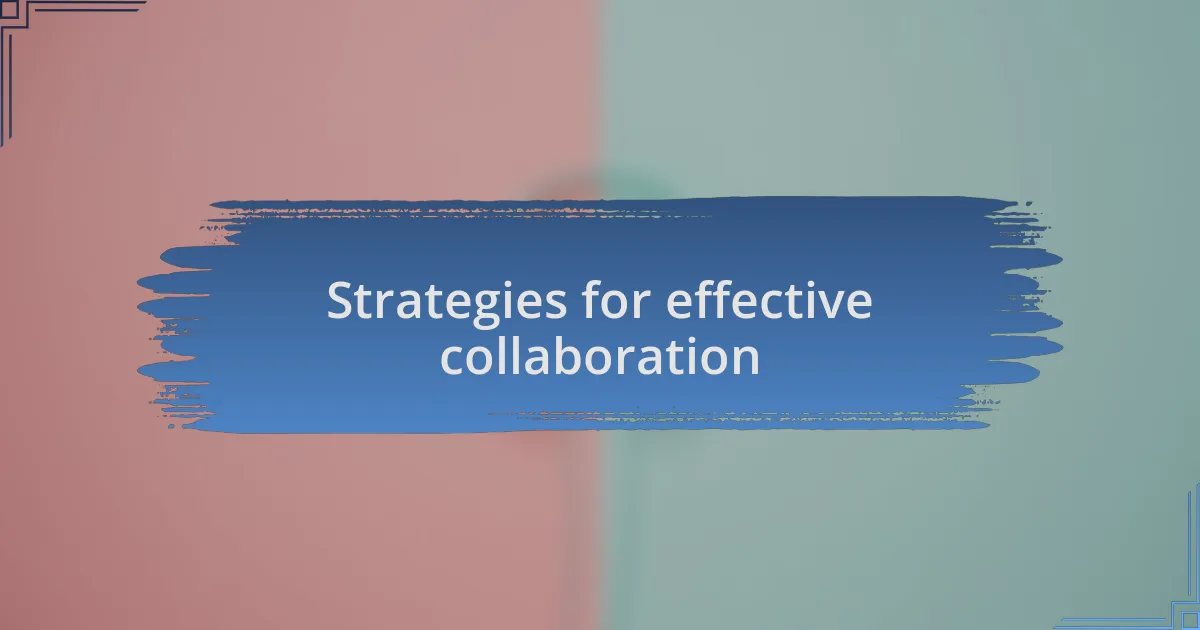
Strategies for effective collaboration
Engaging in effective collaboration starts with creating a safe space for everyone to share. During one songwriting retreat, I noticed that some team members hesitated to voice their thoughts. To break the ice, I initiated a brainstorming session where we all threw out ideas without judgment. It was amazing to see how, once the pressure was off, everyone felt empowered to contribute unique perspectives that enriched our project.
Another strategy I’ve found valuable is utilizing structured feedback sessions. I’ve been in situations where we had a great melody, but the lyrics didn’t quite hit the mark. By setting aside time for focused critiques, we could openly discuss what resonated and what fell flat. This process not only refined our work but built a sense of trust, knowing that our feedback would lead to growth rather than disappointment. Have you ever experienced a transformation in your work due to collaborative feedback?
Finally, it’s crucial to celebrate both small wins and big breakthroughs during the collaboration process. I remember after finally nailing the bridge of a challenging song, my co-writers and I shared a moment of joy that lifted the entire team’s morale. By recognizing these achievements together, we cultivated a strong sense of camaraderie that carried us through the tougher phases of songwriting. Isn’t that what collaboration is all about—supporting each other to achieve more than we could alone?
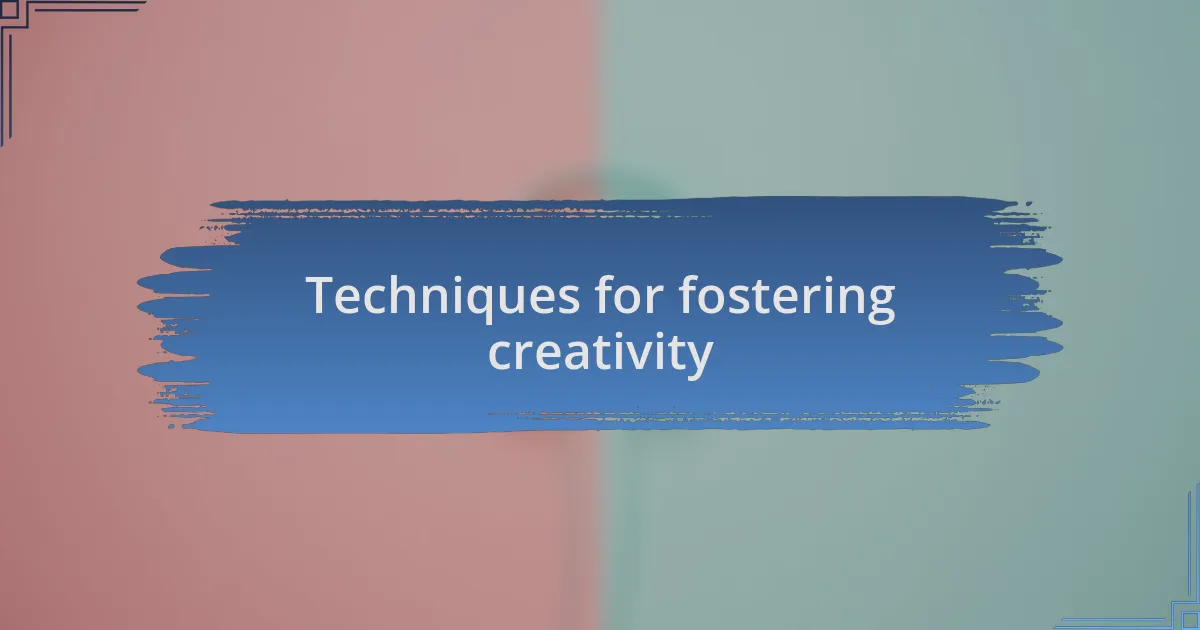
Techniques for fostering creativity
One effective technique for fostering creativity is to incorporate playful exercises into our songwriting sessions. I remember one time, we decided to play a word association game where each member contributed one word that came to mind based on a theme we were exploring. It was so enlightening—each word sparked a different idea in someone else, paving the way for unexpected lyrics and melodies. Have you ever felt that surge of inspiration when you approached a task in a fresh and fun way?
Another method I like is to rotate the roles within the group during our collaborative sessions. Driving the focus away from typical songwriting tasks allowed each person to contribute differently. For instance, one meeting I handled the rhythm engineering while another member took charge of lyrics. This shift not only opened our minds to new possibilities but also fostered empathy among us, as we appreciated the challenges each role involves. Isn’t it fascinating how stepping outside your comfort zone can lead to dynamic creativity?
Lastly, I’ve found that creating visual boards can ignite the imagination. When we gather images, colors, and words related to the emotions we want to convey in a song, it acts as a creative springboard. I distinctly remember crafting a mood board for a ballad we were working on, which brought us clarity and a stronger sense of direction. Have you ever noticed how visuals can inspire ideas in ways that words alone sometimes can’t?
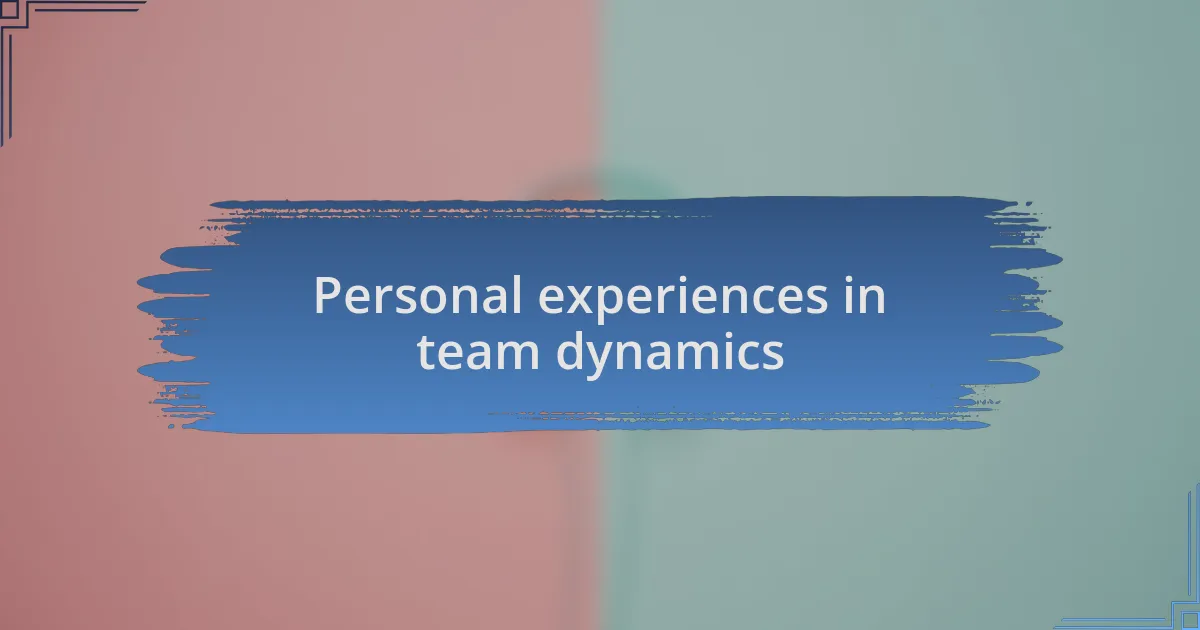
Personal experiences in team dynamics
Collaboration in songwriting often brings out unexpected dynamics among team members. I recall a time when we faced a significant disagreement over the direction of a project. I felt frustrated initially, but rather than letting it simmer, we decided to openly share our feelings during a meeting. That honest conversation not only resolved the issue but also deepened our connection, showing me how vulnerability can transform team dynamics.
There was another instance that illustrated the importance of balancing diverse viewpoints. We were in the midst of writing a song, and one member’s input felt off-track to me. Instead of dismissing it, I opened up about my reservations. To my surprise, their perspective turned out to be a crucial element that enriched our final piece. Have you ever found that what you resist the most can sometimes lead to the greatest breakthroughs?
I’ve also learned that recognition plays a vital role in team dynamics. When we’ve wrapped up a session, I make it a point to celebrate each contribution. I remember praising a member who came up with a catchy hook that transformed our chorus. That simple acknowledgment boosted morale and encouraged everyone to contribute more boldly in future sessions. How has recognizing someone’s effort changed the atmosphere in your team?
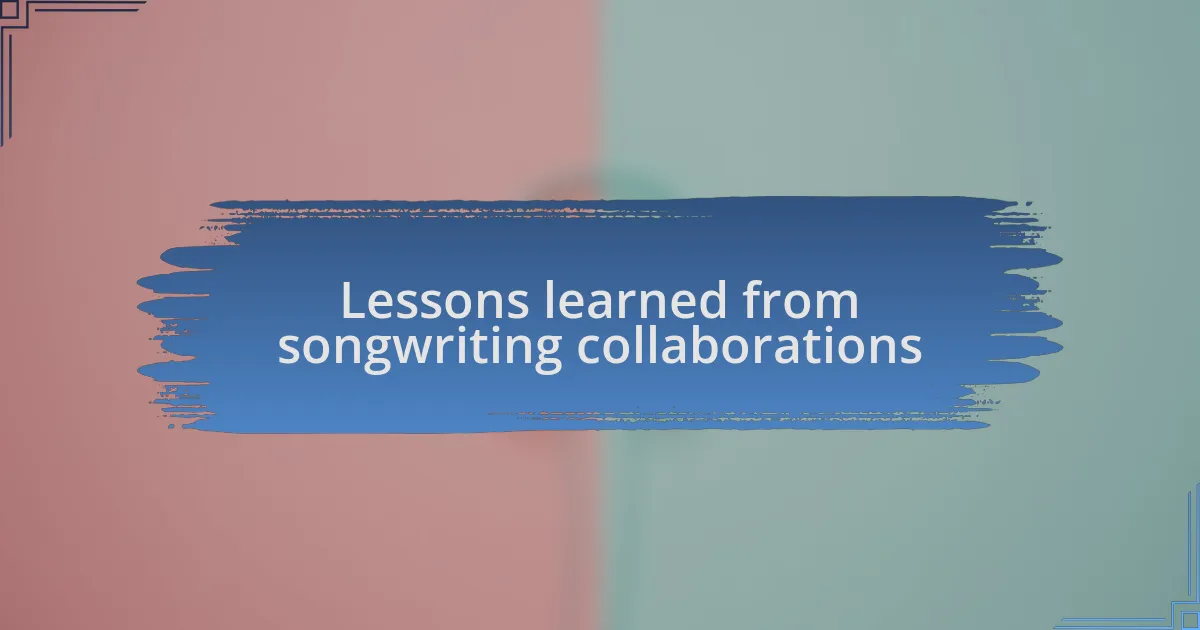
Lessons learned from songwriting collaborations
During a recent songwriting session, I was reminded that timing is everything in collaboration. We were all excited to share our ideas, but I noticed that some voices were getting drowned out. I took a moment to pause and suggest we go around the room, giving each member a designated time to express their thoughts. This small shift transformed the atmosphere; everyone felt heard, and our creativity skyrocketed. Have you ever seen how giving space to quieter voices can uncover hidden gems?
I once worked on a project where we aimed for a specific genre but ended up blending styles instead. As we experimented, I felt uneasy about straying from our original vision, fearing it would confuse our audience. But as we embraced this fusion, it sparked something magical, creating a unique sound that resonated deeply with listeners. Has there been a time when deviating from your plan led to an unexpected triumph?
Lastly, the importance of flexibility cannot be overstated. In one collaboration, we faced a tight deadline, leading to stress among team members. Instead of rushing, I suggested we break the project into smaller tasks and focus on one section at a time. This approach not only eased the pressure but also helped us refine our ideas. How frequently do we allow ourselves that space to breathe and innovate under duress?